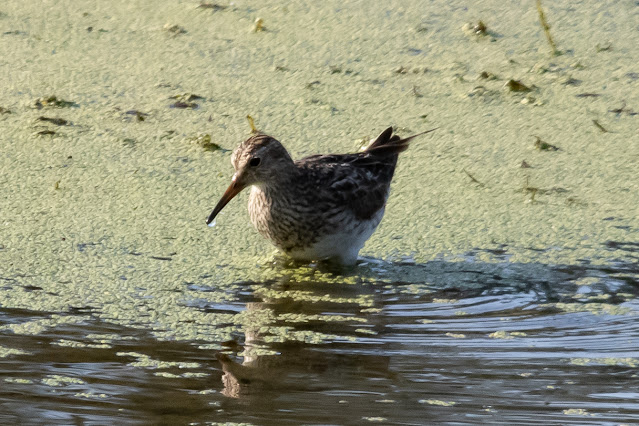Everyone discredits gulls. They're "boring" and most of the time aren't considered "good" birds. I however believe gulls to not only be one of the best adapted (specifically Ring-billed there) but some of the most interesting ID problems in the birding world.
Why do I think that? You may ask, with Empidonax flycatchers, peep sandpipers, and ever so difficult Mallard-like-ducks existing what makes gulls my nemesis for ID? To that, I have two words for you; prolonged ageing. Certain species of gull can go through 4-5 different plumage variations in their lifetime, and the majority going through at least 3-4. And these are only standard plumages let alone worn or "bleached" birds.
Have I lost you yet with the jargon on gulls? Let's start out with the basics. Let's use Ring-billed Gulls as an example. All gulls have young, juvenile, immature, and adult plumages. Ringers have 8 different plumage types; Juvenile, 1st Winter, 2nd Summer, 2nd Winter, 3rd Winter, 3rd Summer, adult basic, and adult alternate. Not to mention albinism or partially leucistic plumage. That is a lot of plumage variations to remember... so you can see why even the most experienced birders still get confused with gulls. Compared to fall warblers who have 3-4 different plumage types (typically, male, male basic, female, and first-winter male), gulls can be overwhelming. So here are a few ways I find works for gulls:
- Always have a guide/ID app on you
- now, this maybe isn't a new thing for birders, especially new ones. This is the easiest way to find solace in the struggle of identification. This is especially key, I find, with gulls. The plumage variation can make any person question their sighting, so keep that guide by your side!
- Make sure you have more than 1 positive ID feature in view
- this is one that most veteran birders are very familiar with. Birds are not always so easy as an American Robin or Wood Duck. These birds are obvious birds to ID but once you get into more difficult or rare birds it's good to get a 100% look at a bird if possible. If you don't then you can't call it anything but gull sp.
- Ask for an outside opinion
- this is what I find to be most effective if you can't figure it out. There will always be someone who might know better than you, so why not take a chance? Maybe you missed something, maybe you just can't get a good stick and you're jumping to rarity, whatever it is, outside help will always have better results than killing yourself over it.
- Take PHOTOs
- I know there are birders who don't like cameras, I get it, photographers can be relentless to get that "perfect shot" but it can also help with those tricky IDs. Photographing a bird has gotten me out of a bind a few times, and they're the best photographs you'll ever take. Taking a photo also gives you the opportunity to look back at that picture and be like, you know, I think that's this not that.
Hope these little tips (even though pretty straight forward) are helpful. They seem to be effective for gulls for me. And don't forget to get
this great guide for a more in-depth look at gulls and terns.
Gulling out of here and terning the page on this topic!
Good birding guys and girls!
 |
| Adult Herring Gull sitting in the waters of Lake Erie - Haldimand ON |
 |
| This Ringer is enjoying the sand between its toes - Haldimand ON |
 |
| Juvenile Common Tern catching some fish at the local pier - Haldimand ON |
 |
| Found a banded Juv. Herring Gull - turns out it was banded in Ohio and made the trip over to Ontario - Haldimand ON |















